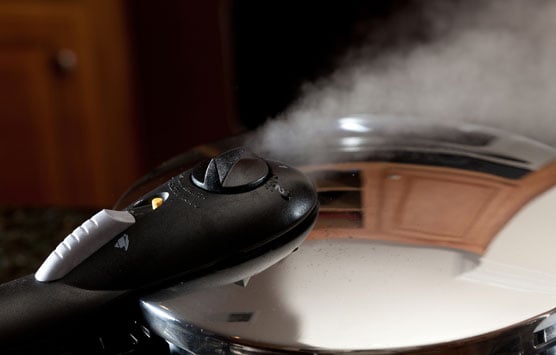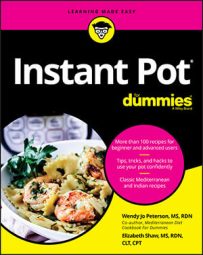 ©Steve Heap/Shutterstock.com
©Steve Heap/Shutterstock.comThe more liquid you have in the pot and the cooler the temperature, the longer the pot will take to come to pressure.
The lid that comes with your Instant Pot has a built-in mechanism that allows you to control the way in which the pressure is released inside the pot.But before pressure can build up, you have to adjust the valve on the top part of the lid and make sure it’s placed in the Sealing position. The Sealing position locks the lid in place and prevents steam from escaping, which would hinder your pot from heating up to the appropriate temperature to heat your food.
That same valve also has a Venting position, which allows the pressure to quickly release to avoid overcooking your food. To understand this a little bit better, you need to understand the pressure release options for the lid: Natural Release and Quick Release.
If you release the pressure too quickly, steam and potentially some liquid may escape from the pot. Take note of our suggested pressure release method for each recipe.
Here are the two methods for releasing pressure from the Instant Pot:- Natural Release: Natural Release is a slower method of releasing the pressure from the pot. When you use Natural Release, the food continues to cook inside the Instant Pot as the pot gradually releases the pressure.
Some recipes may call for only a Natural Release. In others, both a Natural Release and a Quick Release time are given to avoid overcooking the food. Natural Release can take anywhere from 10 minutes to an hour depending on the recipe.
Here are the most common reasons we enlist the Natural Release function in this book:
- To complete cooking
- To keep food warm
- To prevent liquids from coming out the vent
- To allow foods to cool and thicken
- To keep foods tender
- Quick Release: You likely purchased (or maybe were gifted) an Instant Pot in the spirit of saving time. In that case, the Quick Release function may be your new best friend! The Quick Release functions just the way you’re imagining it does: You quickly release pressure from the pot by immediately pressing Cancel and then turning the valve to Venting when the cooking cycle completes.
If you’re looking for a recipe that enlists this time-saving spirit, be sure to read the heading section of the recipe and make sure it says Quick Release.
Here are the most common reasons we enlist the Quick Release function in this book:- To avoid overcooking the food
- To save time
- To prevent delicate ingredients from becoming mushy
- To save time
Don’t vary the release method for the recipes—follow the instructions we’ve provided. Trust us, there’s a method to our recipe writing madness!

